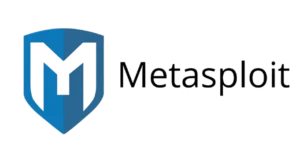As cybersecurity threats grow in complexity, open source cybersecurity tools have become indispensable for security professionals. These tools offer transparency, flexibility, and a community-driven approach to tackling evolving threats. In 2024, tools like Metasploit, OWASP ZAP, Wireshark, and Snort remain critical for identifying vulnerabilities and defending against attacks. However, the journey toward 2025 brings new challenges, from real-time threat detection to adapting to AI-driven threats.
Let’s explore the top 5 open source cybersecurity tools that are shaping the cybersecurity landscape in 2024 and the hurdles they face in the years ahead.
1. Metasploit Framework

Why It Shines
Metasploit, with its powerful penetration testing capabilities, is a favorite among ethical hackers. Its extensive library of exploits, payloads, and auxiliary modules makes it a versatile tool for simulating real-world attacks and assessing vulnerabilities.
Challenges Ahead
- AI-Driven Threats: Metasploit must adapt to detect and test against AI-powered attacks, which can evolve faster than traditional threats.
- Rapid Exploit Updates: Keeping its exploit database updated to match the speed of emerging vulnerabilities will be a significant challenge.
2. OWASP ZAP (Zed Attack Proxy)

Why It Shines
OWASP ZAP is the go-to tool for web application security testing. With its user-friendly interface and features like automated scanning and passive alerts, it’s ideal for identifying vulnerabilities like SQL injection and cross-site scripting (XSS).
Challenges Ahead
- Real-Time Application Testing: As applications shift to real-time architectures, ZAP must evolve to test dynamic, data-driven web apps effectively.
- Integration with DevSecOps Pipelines: Seamless integration with modern CI/CD pipelines will be critical for keeping ZAP relevant in agile environments.
3. Wireshark

Why It Shines
Wireshark, a network protocol analyzer, remains unmatched for inspecting and analyzing network traffic. Its ability to dissect packets at a granular level is invaluable for diagnosing network issues and detecting suspicious activity.
Challenges Ahead
- Handling Encrypted Traffic: The increasing adoption of HTTPS and encrypted protocols presents challenges for analyzing traffic without breaching privacy.
- Scalability for Large Networks: As networks grow in size and complexity, Wireshark needs to handle larger datasets efficiently.
4. Snort

Why It Shines
Snort is a leading intrusion detection and prevention system (IDS/IPS) known for its rule-based approach to monitoring network traffic. Its ability to detect malicious activities in real time makes it a critical tool for network defense.
Challenges Ahead
- Adapting to Zero-Day Threats: Snort’s rule-based system must evolve to detect unknown threats, especially as zero-day exploits become more sophisticated.
- Performance Optimization: Ensuring real-time detection without impacting network performance is a key area for improvement.
5. OpenVAS (Open Vulnerability Assessment System)

Why It Shines
OpenVAS, part of the Greenbone Vulnerability Management suite, excels at scanning networks and systems for vulnerabilities. Its robust reporting and integration capabilities make it a staple for comprehensive security assessments.
Challenges Ahead
- False Positives Management: Reducing false positives while maintaining accuracy in detection is a constant challenge.
- Cloud Vulnerability Scanning: Adapting to the growing adoption of cloud-native technologies will be critical for OpenVAS.
Challenges Toward 2025
- Real-Time Threat Detection: As threats become faster and more sophisticated, tools must improve their capabilities for detecting and responding to attacks in real time.
- AI-Driven Attacks: The rise of AI-powered attacks requires these tools to integrate machine learning algorithms to counteract advanced threats.
- Encryption and Privacy Concerns: Balancing effective security monitoring with privacy concerns around encrypted data will be a significant challenge.
- Integration with Modern Architectures: Tools must adapt to work seamlessly with cloud-native environments, containerized applications, and microservices.
- Scalability and Performance: Handling the increasing volume of data in larger networks and ensuring minimal impact on system performance will be crucial.
Final Thoughts about open source cybersecurity tools
The top open source cybersecurity tools of 2024—Metasploit, OWASP ZAP, Wireshark, Snort, and OpenVAS—continue to empower security professionals with cutting-edge capabilities. However, as we move toward 2025, these tools must innovate to meet the demands of a rapidly evolving threat landscape. From real-time detection to integrating AI-driven features, the future of open source cybersecurity tools will be shaped by their ability to adapt to new challenges. Whether you’re a seasoned security expert or a newcomer, these tools are essential allies in safeguarding the digital world.
Useful Links: Top 5 JavaScript Frameworks in 2024, Top 5 JavaScript Testing Frameworks in 2024, Top 5 CSS UI Kits in 2024, Top PHP Frameworks in 2024, Top 5 Open-Source PHP CMS Platforms in 2024

